
Copyright © 2005 the Brewery History Society
|
Journal Home > Archive > Issue Contents > Brew. Hist., 120, pp. 20-34 |
The Brewing Connection in the Oxford Dictionary of National Biography: Part II |
by Ray Anderson |
Part 1 of this survey of people connected with brewing who appear in t h e O x f o r d Dictionary of National Biography (DNB) was devoted to the brewers; or more precisely to proprietors, partners, and directors of brewing companies, many of whom were leaders in the industry. In this second part we turn our attention to a wider range of individuals and find some unlikely connections.
Although, as may be expected, they have far fewer entries than the brewers, the maltsters have a respectable representation in the dictionary. The first chronologically is Stead, Patrick (1788-1869), who from the 1820s became Truman's ‘foremost East Anglian maltster’ and his ‘expertise was also recognized by the great brewer, Michael Bass, who considered him to be the best maltster in England’. Stead was a considerable innovator, ‘he developed a revolutionary malting system using steam and hot air to control germination and kilning. Patented in 1842 … it was in many respects the prototype of modern-day mechanical malting’. Perhaps the most interesting of the entries for maltsters, which are all written by Christine Clark, is that on Garrett, Newson (1812-1893), who, ‘fairhaired and blue-eyed, strikingly handsome, self-confident, and impetuous’ built up a substantial malting business in Aldeburgh. Particularly impressive are the accomplishments of his daughters, three of whom: ‘achieved notable firsts: Elizabeth Garrett Anderson was Britain's first legally qualified woman doctor; Millicent Fawcett, first president of the National Union of Women's Suffrage Societies; and Agnes Garrett, London's first woman interior designer’. All of these women have their own entries in the dictionary. Newson's maltings at Snape ‘subsequently formed the venue for the Aldeburgh music festival founded by Benjamin Britten and Peter Pears’.
Two names which go together are Gilstrap, Sir William, baronet (1816- 1896), ‘enterprising and ambitious’ and Earp, Thomas (1830-1910), ‘a man of tremendous energy’ who amalgamated their neighbouring businesses in Newark in 1880 ‘to form the most prestigious [and largest] malting enterprise in Britain’. Gilstrap remained as senior partner in Gilstrap, Earp & Co. until his death, with Earp as managing partner until his retirement in 1905. Whereas Gilstrap ‘adopted the lifestyle of a landowning gentleman’, Earp's ‘ambitions were equally realized in politics and civic life. Indeed, there are few more representative examples of a self-made Victorian businessman and politician … a staunch Liberal … a relentless, if controversial, reformer’. The later fortunes of the company are chronicled in the entry on Downes, Hubert Downes Cherry- (1876-1964), who as managing director of Gilstrap, Earp & Sons ‘proposed a scheme to rationalize the malting industry by the closure of redundant maltings’ in 1922, and although ‘his ideas were too radical and found little support"’the continued decline in brewing led to the formation in 1928 of what became Associated British Maltsters (ABM), with Cherry-Downes as joint managing director. He remained on the board until he was eighty-two. The great rivals of Gilstrap, Earp/ABM are represented by, Paul, William Francis (1850-1928). In 1874 William and the brother Robert (1844-1909) inherited their father's malting business ‘and, under William's leadership, the partnership prospered’. The firm was incorporated in 1893 as R. & W. Paul and ‘in Ipswich five large, modern maltings, designed by the brothers, were completed by 1912’. William was ‘uncompromising and hasty … an opportunist, he was determined to remain at the forefront of progress’, he pursued diversification of the company's interests into maize processing and ‘began the family's deep involvement in farming’.
|
|
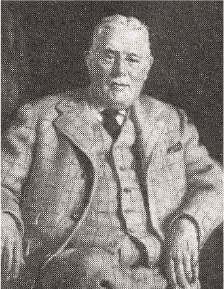 |
|
|
Although not a maltster a man of considerable significance to malting, was the clergyman Chevallier, John (1773/4- 1846). As the dictionary puts it: ‘Chevallier's wider historical significance was as the originator of Chevallier barley. This began as a chance find by a labourer in Debenham in 1819 and was systematically developed by Chevallier during the 1820s … It was valued for its outstanding malting qualities and it was widely grown during the second half of the nineteenth century’. Chevallier was in the original DNB and hence gets an automatic place in the Oxford DNB, but there is no room for two more recent barley innovators, Edwin Sloper Beaven (1857- 1941) and Herbert Hunter (1882-1959). They are the men who bred the hybrid varieties Plumage-Archer and Spratt- Archer respectively, which became the standards by which all other malting barleys were judged from the 1920s till the early 1950s. Someone who does get in is Bell, (George) Douglas Hutton (1905- 1993), director of the Plant Breeding Institute, Cambridge, where as the dictionary says: ‘The pinnacle of his success with barley came with the release of the spring barley variety Proctor in 1953’. Proctor took over from the two Archers as the malting variety of choice and was to remain so until the 1980s.
There is room in the dictionary for four early technical innovators in brewing, with Baverstock, James B (1741-1815), and Richardson, John (1743-1815), ‘the father of methodical brewing’ both making it primarily for their introduction of the hydrometer / saccharometer and Combrune, Michael (d.1773), there because he was the first to propose the use of a thermometer in the brewery. Bramah, Joseph (1749-1814), who invented the beer engine in 1797 also makes it, although his entry makes it plain that Bramah's most important invention was the hydraulic press in 1795.
A good number of scientists who have associations with brewing also have entries in the dictionary. The well known Accum, Friedrich Christian (1769- 1838), famous for his Treatise on Adulterations of Food and Culinary Poisons otherwise known as Death in the Pot first published in 1820, which included a vehement attack on 'sophistications' of food (and beer) is in. As is the less celebrated Warington, Robert (1807- 1867), who was employed by Truman, Hanbury, and Buxton from 1831 till 1839, and was almost certainly the first qualified chemist to be employed in a British brewery, but who is included primarily for his leading role in the formation of the Chemical Society of London (later the Chemical Society) in 1841.
|
|
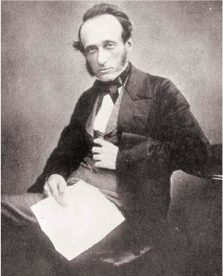 |
|
|
A chemist with a more substantial career in brewing was, O'Sullivan, Cornelius (1841-1907), who became chemist and assistant brewer at Bass in 1866 and was ‘among the first chemists to apply scientific principles specifically to brewing … it was particularly his work on the products of the hydrolysis of starch by acids and by diastase to which he owed his reputation’, and his Fellowship of the Royal Society. A less well known chemist, at least in brewing circles, to have worked for Bass who gets into the dictionary is Knobel, Edward Bell (1841-1930). Knobel's appointment to the company as an analytical chemist actually predates that of O' Sullivan by some four years, and he was to stay with Bass until 1875 when he left to join Courtaulds as manager and chief dye chemist. His subsequent career saw him flourish as both chemist and business man with Courtaulds and a photographic materials manufacturer which became Ilford Ltd., where ‘for five years he was the only scientist on the staff and he made major technical and economic contributions’. In his spare time he also made significant contributions to astronomy, to the extent that he was awarded the honorary degree of DSc at Oxford at the age of 86 for his work in that area.
|
|
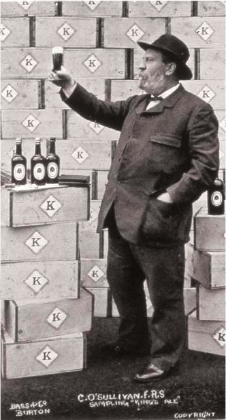 |
|
|
Joule, James Prescott (1818-1889), is also included, again not because of his association with brewing, but because of his experimental determination of the mechanical equivalent of heat which was ‘the foundation for the new doctrine of conservation of energy’. Nonetheless, the dictionary has this to say on the relevance of his work in the family brewery in Salford to his ‘iconic role’ in these developments: ‘It now seems certain that he played a very active role in its management in the decade or so before its final sale in 1854 ... there are good grounds too for seeing his laboratory practice and brewery management as mutually reinforcing activities’. The entry on Joule in the dictionary is the longest of anyone with a significant connection with the brewing industry.
Another man whose activities extended far beyond his brewery work was Griess, (Johann) Peter (1829-1888), chemist to Samuel Allsopp & Sons for 26 years from 1862 until his death. Griess's inclusion in the dictionary rests on his discovery and subsequent work on ‘a new and versatile chemical reaction which could provide a route to a wide range of new compounds’. These diazo compounds, so called because they contained two atoms of nitrogen per molecule, were to be widely utilised in the production of azo dyes, and the dictionary hails Griess's synthesis of them as ‘perhaps the greatest single discovery in the history of the dyestuffs industry’. Historians of chemistry place Griess in the front rank of Victorian chemists.
|
|
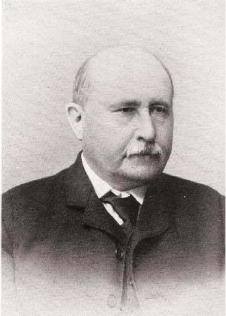 |
|
|
A less well known instance than those of Joule and Griess of a world class scientist working in a brewery is that of Aston, Francis William (1877-1945). After a spell at Mason College, Birmingham, Aston worked from 1900 until 1903 as a chemist in what the dictionary describes as a ‘Wolverhampton brewery’ and which was in fact William Butler's Springfield Brewery. In his spare time Aston experimented with ‘the construction of X-ray tubes of novel design and in the phenomena of gas discharges at low pressure’ which led him to become a research student in physics at Birmingham University, as Mason College had become. In 1910 he went on to do research at the Cavendish Laboratory, Cambridge, under J.J. Thomson discoverer of the electron. There he developed the mass spectrograph which he used to study atomic masses and establish the existence of isotopes. As the dictionary tells us ‘widespread acclamation greeted the publication of Aston's astoundingly simple but entirely revolutionary results’. He was awarded the Nobel prize for chemistry in 1922.
Jarmay, Sir John Gustav (1856-1944), was another chemist who went on to greater things after working in a brewery for a short time. The dictionary notes that Jarmay took ‘…the first step on his long industrial career with Greenall, Whitley & Co., brewers of Warrington’ with whom he worked from 1878 to 1880 before he ‘began a connection with Brunner, Mond & Co. which was to last the rest of his active life’, going on to gain a KBE for his company's contribution to the supply of high explosives in the First World War. The main claim to fame of the Guinness chemist / brewer / statistician Gosset, William Sealy [pseud. Student] (1876- 1937), is that he ‘devised a statistical method (known as Student's t-test)’, which allowed significance testing on small samples for the first time. He devised the test specifically to enable the meaningful assessment of results which arose from work on experimental barley growing for Guinness, but the test soon found wide application elsewhere. Gosset adopted a pseudonym because at the time and for many years thereafter Guinness forbade their staff from publishing as a condition of employment.
|
|
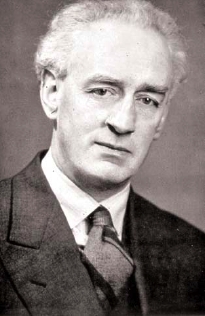 |
|
|
A scientist who is in the dictionary solely on the strength of his published contributions to brewing and malting is Preece, Isaac Arthur (1907-1964), who from 1950 was the first professor of brewing and applied biochemistry at Heriot-Watt College, Edinburgh, where according to the dictionary ‘he fought steadily, if slowly, to replace empiricism with experimentally validated procedures’ in the industry. Heilbron, Sir Ian Morris (1886-1959), who was the first director of the Brewing Industry Research Foundation, Nutfield, Surrey from 1949 until 1958 would on the other hand undoubtedly have made it into the Oxford DNB on the basis of his achievements as professor of organic chemistry at successively Liverpool, Manchester and Imperial College, without that late career appointment. Bunker, Henry James (1897-1975), who, in a career as an applied microbiologist which included examining samples of the mummy's wrappings from the tomb of Tutankhamen for microbes and attempts ‘to make edible yeast from waste molasses as a protein rich food supplement’ during the Second World War, directed the research department of Barclay-Perkins from 1944 until 1956. Following the merger with Courage his laboratory was closed and he then embarked ‘upon a new and highly successful career as a freelance consultant on microbiological problems in industry’.
|
|
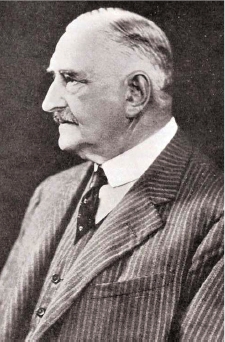 |
|
|
Garton, Sir Richard Charles (1857- 1934), had an even more highly successful career. Chemist, sugar manufacturer and brewer, pioneer in the production of liquid glucose, director of Manbre and Garton brewing sugar manufacturers, sometime chairman of Watney, Combe, Reid & Co. Ltd., and director of E. Lacon & Co. On his death he left £2,641,364 19s. 7d, equivalent to about £150 million today. Mention should also be made of Armstrong, Henry Edward (1848- 1937), ‘chemist and educational reformer’, once described as the ‘doyen of British chemistry’. He was a great supporter of the brewing industry and its chemists and although the dictionary has little to say regarding this aspect of his life, it does note that he was awarded ‘the Horace Brown medal of the Institute of Brewing’ in 1926.
The names of four significant figures in the world of brewing appear in the dictionary not because they are deemed to deserve an entry on their own account, but as bit players in someone else's. Thus in the entry for Cumming, (Felicity) Anne (1917-1993), ‘writer and sexual adventurer’ we are told that: ‘Her grandfather was Sir Grimble Groves, brewery owner and Conservative MP for South Salford’. The lady is noted to have ‘lost her virginity on a park bench under the Eiffel Tower’ in 1935, the year she came out as a debutante, and ‘in the year of her death appeared on television wearing only a pearl necklace, earrings, and hat in the world's first nude chat show’. It is not clear which of the Grimble Groves of the Salford brewers Groves & Whitnall was this remarkable lady's grandfather; James Grimble Groves (1854-1914) first chairman of the Brewers' Society presumably, as he was the only family member to have been an MP, although he was never knighted. One imagines him turning in his grave at her antics.
Arthur Ronald Nall Nall-Cain, second Baron Brocket (1904-1967), chairman of Walker Cain Ltd and later first vice-chairman of Allied Breweries, appears in the dictionary as a figure in the entry on the Knoydart, Seven Men of (act.1948). The entry concerns ‘… a land raid on the Knoydart estate of Lord Brocket which sought to establish their [the protesters] claim to have small-holdings created by the department of agriculture for Scotland’. Brocket, an absentee landlord whose ‘estate management had been heavily criticised’, is billed in the dictionary as ‘millionaire landowner and brewery director, and former Conservative MP, demonised at the time and in subsequent memory as a Nazi sympathizer; an accusation based on visits to Germany in the 1930s and views on the regime expressed on such occasions’. What the dictionary does not record is that Brocket was known to brewery workers in Warrington as 'Hitler's friend'.
The first Lord Gretton's uncle, Frederick Gretton (1840-1882), who owned a one eighth share of Bass, Ratcliffe & Gretton, appears in the entry on Houston, Dame Fanny Lucy (1857-1936), ‘adventuress’, with whom he eloped to Paris when Fanny was a sixteen year old actress known as Poppy Radmall, abandoning his wife. The dictionary describes the relationship with Fanny as follows: ‘Mrs Gretton, as she became known, was a beautiful young coquette, with direct, impudent speech and a tiny waist, who became expert in Parisian fashions and manners. During their riotous partnership Gretton gave her many gifts, before bequeathing her £6000 a year for life’. Fanny continued to have an unconventional life. She married three times, once to the ninth Baron Byron, was a suffragette, ‘a fresh-air fiend and nudist’, was created DBE in 1917 for war work, had ‘secret, flirtatious meetings at the Treasury with Winston Churchill’, was intensely patriotic and ‘as part of her longing to see Britain supreme everywhere she donated £100,000 to enable a British team to compete for the Schneider aviation trophy’. This latter act is credited by some with being a crucial step in the future development of the Spitfire. She bought a newspaper which she turned into ‘a mouthpiece of high tory chauvinism’, but ‘her influence waned as her eccentricity became more offensive’. All rather different to the home life of her near family back in Burton.
In the entry on Stopes, Charlotte Brown Carmichael (1840-1929), ‘feminist and literary scholar’, there is brief mention of her husband Henry Stopes (c.1852- 1902), ‘a brewer, architect, and distinguished amateur archaeologist’. Henry Stopes is best known to brewers and maltsters for his classic work Malt and Malting. An Historical, Scientific, and Practical Treatise, published in 1885. Their first daughter was Stopes, Marie Charlotte Carmichael (1880-1958), ‘sexologist and advocate of birth control’.
One of the great joys of the on-line version of the Oxford DNB is the ease with which one may turn up the unexpected. Searching the main body of the text for terms such as brewery and beer produces some intriguing connections. Most of us will I think remember the actor Greenstreet, Sydney Hughes (1879- 1954) for his menacing appearances in such classic 1940s films as The Maltese Falcon and Casablanca, where as the dictionary puts it he ‘essayed sophisticated, corrupt villains, who chucklingly delighted in their malevolent ingenuity’, but how many of us knew that he was also agency manager for Watney, Combe, Reid &Co. in Harrow in 1901-2? Morrison, Herbert Stanley, Baron Morrison of Lambeth (1888-1965), deputy prime minister in the 1945 labour government, amongst other positions in a long political career, worked as a switchboard operator for Whitbread's from 1908 till 1912. O'Connell, Daniel (1775-1847) the Irish nationalist leader, known as the Liberator, is noted to have been unsuccessful in his business dealings including the ‘purchase of a small Dublin brewery’. Another unlikely connection is that of Calcraft, William (1800-1879), sometime nightwatchman at Reid's brewery in Clerkenwell, who became ‘the most famous hangman of the century’. Famous perhaps but not the most skilled, for the dictionary goes on ‘… he seems to have been particularly incompetent at his job, clumsy, bungling, and notoriously unable to calculate the correct length of rope required for each individual hanging; he frequently had to rush below the scaffold to pull on his victim's legs to hasten death’. Faber, Sir Geoffrey Cust (1889- 1961), who in 1920 ‘joined the board of Strong & Co. Ltd, the brewers, of Romsey, a firm with which he had family connections’, but by 1923 had ‘abandoned brewing’, went on to form the noted publishers Faber and Faber Ltd in 1929.
|
|
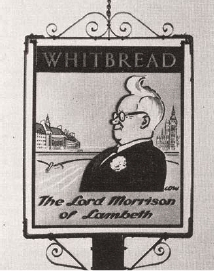 |
|
|
An unusual number of people who later found fame in other fields worked for a time as brewery clerks. Manio, Jean Baptiste de [known as Jack de Manio] (1914-1988), the original Today presenter on what was then the Home Service, who famously had trouble telling the time, ‘got a job as an invoice clerk in a brewery in Spitalfields’ on leaving school ‘without any academic qualifications’. Plimsoll, 28 The Samuel (1824-1898), ‘politician and shipping reformer of the eponymous line, worked as a clerk for an unnamed Sheffield brewery in the 1840s. Bates, Henry Walter (1825-1892), ‘naturalist and explorer’, worked as a clerk at Allsopp's brewery in Burton-on-Trent for several years in the 1840s before spending 11 years exploring the Amazon and going on to become secretary of the Royal Geographical Society and a friend and associate of such leading men of Victorian exploration, science and geography as, ‘Livingstone, Stanley, Whymper, Darwin and Wallace’. Sylvester, Albert James (1889-1989) ‘political and private secretary’ worked as a clerk in an unnamed brewery in Burtonon- Trent on leaving school at fourteen. There he ‘devoted most of his leisure to perfecting his shorthand and typing’ to such effect that via freelance work in London and civil service appointments he was recruited by Lloyd George to the secretariat at 10 Downing Street in 1921. He remained associated with the welsh wizard until Lloyd George's death in 1945.
Parents can also make a connection between dictionary subjects and brewing. Cromwell, Thomas, earl of Essex (b. in or before 1485, d. 1540), ‘royal minister, was the son of Walter Cromwell of Putney, Surrey, who made his name there as a blacksmith, fuller, and cloth merchant, as well as the owner of both a hostelry and a brewery’. Scott, Robert Falcon [known as Scott of the Antarctic] (1868-1912), was ‘the third of the six children of John Edward Scott (1830-1897), a brewer’. Boon, Charles (1877-1943), publisher of Mills & Boon fame, spent his childhood living above a brewery in Seven Dials in which his father worked as a ‘brewer's servant’. The father of the actor Brambell, (Henry) Wilfrid (1912-1985) worked as a cashier at the Guinness brewery. Wolfit, Sir Donald (1902-1968), ‘actor and theatre manager’, was born in ‘New Balderton, near Newark, the fourth of the five children of William Pearce Woolfitt (1862- 1938), brewer's clerk’. The father of Newman, John Henry (1801-1890), ‘theologian and cardinal’, is noted to have ‘tried unsuccessfully to manage a brewery at Alton, Hampshire’. Thomas, John (1691-1766), bishop of Salisbury, was ‘the son of a drayman of Nicholson's brewery in All Hallows parish in the City of London’. The father of Powell, Olave St Clair Baden- [née Olave St Clair Soames], Lady Baden-Powell (1889- 1977), leader of the world Girl Guide movement, came from a brewing family. The dictionary tells us: ‘Her father, an educated and artistic man, had been able to sell his family business, the Brampton Brewery Company, in his early thirties, and thereafter was able to live comfortably off his investments’
There are many links between the drinks trade and sport. Today brewery companies compete to be associated with football, but cricketers with brewing connections predominate in the dictionary. It is not unusual for retired sportsmen to become publicans; to take up brewing is less common. An example in the dictionary is that of Daft, Richard (1835-1900), of Nottinghamshire and England of whom it is said ‘in the 1870s he had no superior as a batsman except W. G. Grace’ and who ‘at the end of his cricketing career retired to the native place of his old captain, George Parr, at Radcliffe-on- Trent, where he kept a small brewery’.
|
|
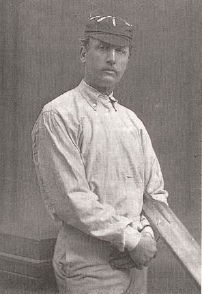 |
|
|
Walker, Vyell Edward (1837-1906), is the only member of an established brewing family to appear in the dictionary because of his cricketing prowess: ‘On leaving school he devoted himself mainly to cricket until some twenty years later he joined the family brewing firm, Taylor, Walker & Co.’. He played for Middlesex and England and captained the Gentlemen against the Players on ten occasions. According to the dictionary: For a brief spell in the early 1860s, before the emergence of W.G. Grace, he was considered the best all-round cricketer in the country’. No less than six of his brothers played for Middlesex at one time or another. Perhaps the most tragic figure amongst the sportsmen with brewing connections is, Chapman, (Arthur) Percy Frank (1900-1961). In 1923, Chapman, who enjoyed a brilliant cricketing career at Cambridge, joined Mackeson & Co.Ltd of Hythe ‘to learn the brewing business and, ultimately, to qualify for Kent’. Mackeson was then owned by H. and G. Simonds of Reading, Chapman's home town, and he was playing cricket for the minor county of Berkshire although he had already toured Australia with the MCC. Chapman went on to become England's youngest ever captain. The Oxford DNB has nothing more to say of Chapman's brewing career but contains this stark passage ‘… his taste for conviviality was his undoing. As alcohol claimed him, his figure, already tending to girth (he weighed 15 stone in 1930), became bloated and he went into a sad decline’. One of England's greatest fast bowlers Statham, (John) Brian (1930- 2000), was employed by a brewery and the dictionary has this to say of the connection: ‘He at first enjoyed a rewarding career with the Guinness brewing company but he found it hard to adjust to the increased pressures of work and meeting such demands as monthly productivity printouts. He lost his confidence, his health was not good, and he took early retirement’. A different retirement awaited Cowdrey, (Michael) Colin, Baron Cowdrey of Tonbridge (1932-2000) of whom the dictionary notes, ‘for a while he was a nonexecutive director of the south-eastern branch of Whitbread Fremlins, the brewers’.
|
|
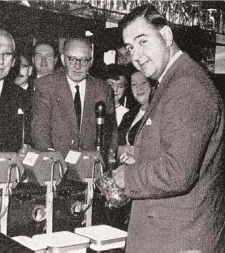 |
|
|
Others with sporting and brewing connections are: Ellis, Arthur Edward (1914-1999) the international football referee and sometime of the BBC's It's a Knockout, who was ‘a representative of a local brewery company, Thomas Ramsden’ and then Tetley/Allied, from 1952 until 1982. Gould, Arthur Joseph (1864-1919), ‘capped twenty-seven times for Wales between 1885 and 1897 … one of the outstanding sportsmen of the late Victorian era’ worked as a brewery clerk after his rugby career ended. Llewellyn, Sir Henry Morton [Harry], third baronet (1911-1999), is known for riding his horse Foxhunter to victory when Great Britain won the team gold at showjumping in dramatic circumstances at the 1952 Helsinki Olympic games. The dictionary informs us, not entirely accurately, that ‘when compensation money came through’ following nationalization of his family's coal mines ‘he became chairman of the Andrew Buchanan brewery, which he renamed Rhymni and eventually sold to Whitbread in 1972. He was president of Whitbread Wales Ltd thereafter’.
In the entry on Atkins, (Alexander) Robert (1886-1972), ‘actor and theatre director’ the following passage appears ‘To this day many of his ripostes continue to resound through the rehearsal rooms and hostelries used by later theatricals. When Colonel Fordham Flower, of Flower's Brewery and chairman of the board of Stratford Memorial Theatre, requested Robert's resignation, it drew from Robert a less than flattering reference to Flower's Bitter, which will live as long as brewers brew and actors drink’. Does anyone know the allegedly famous riposte? The entry on Sinnott, William Veitch [pseud. Will Sinn] (1960-1991), ‘popular musician’ who was bass guitarist for the ‘psychedelic rock band’ the Shamen contains the interesting passage ‘The brewers Scottish and Newcastle, who were major Conservative Party supporters, were planning to use the band's 'Happy Days' to advertise their McEwan's lager, unaware that the song was an anti- Falklands war polemic. The brewery found out at the last minute and pulled the campaign, and the Shamen resisted their attempts to recoup the substantial amount of money already paid out’.
Deciding who should appear in the Oxford DNB must have been extraordinarily difficult and any observations on who is in and who is out must be tempered by the recognition that something akin to the judgement of Solomon was necessary. To an extent the outcome has been conditioned by the decision to retain everyone who made it into the original dictionary and its supplements, but one ponders on some of the choices and omissions. Amongst all those Buxtons could not room be found for the splendid Sampson Hanbury (1765-1835) a partner in the London brewery for 46 years who steered it to second place in the metropolis? If Lord Gretton and Arthur Manners, who together presided over the decline of Bass from colossus to tanished dinosaur are in, then why not Sir Alan H Walker (1910-1978 ) who restored the company to leadership in the form of Bass Charrington? If Sir Keith Showering, who turned Allied into an unwieldy conglomerate in the late '70s, then why not Sir Edward Thompson (1907-1994) who guided Ind Coope & Allsopp to unprecedented success in the '50s. Amongst the scientists and technologists, if Cornelius O'Sullivan gets in why not his at least equally distinguished contemporary Horace Brown (1848-1925) of Worthington and Guinness? If Arthur Preece of Heriot-Watt, why not Laurence Bishop (1903-1988) of Birmingham and Watneys, a far more influential figure? Could not room be found for Richard Seligman (1878-1972), pioneer in the use of aluminium process vessels in the food and drink industry and inventor of the plate heat exchanger? Most glaring of all why no Edward Plunkett Taylor (1901- 1989) the man who did most, for good or ill, to transform the face of the British brewing industry in the late '50s and early '60s. He was a Canadian and spent limited time in the UK, but that is no bar to his appearance in the dictionary considering his legacy.
|
|
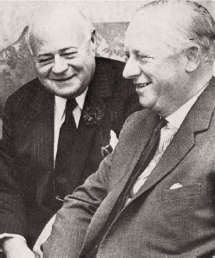 |
|
|
One of the declared intentions of the new Oxford DNB was to include a larger number of regionally important figures and one could make a case, although not I think a particularly strong one, for a few more brewers to have made it on this basis. A Holt or a Boddington, a Vaux Nicholson or a Tetley perhaps? BHS members may have their own candidates. Personally I would rather have liked to have seen Francis Pelham Whitbread (1867-1941) make it. Not particularly because of anything he did - although he certainly looked the part and was prominent in the trade - rather because of his rather endearing habit of regularly dozing off at meetings. Luckily he had Sydney Nevile to actually run the company.
Make no mistake, the Oxford DNB is a truly magnificent achievement brimming with scholarship and erudition. The entries on people with brewing connections are no exception (although one occasionally notices the dead hand of the economic historian in some of the entries on major figures which fail to bring the subject to life). But even in the most heavily checked and double-checked work, and especially one of this magnitude, some errors of detail will get through the net and be spotted by the dedicated anorak. To date this anorak has found nine such errors. These range from small mistakes in dates and family relationships, through historically more important matters, including attributing to Peter Griess investigations done by others, to perhaps the most unfortunate of all, misquoting William Waters Butler's famous rallying cry for public house reform: ‘Fewer and Better’, as: ‘Fewer but Better’. The latter conveys a rather different meaning to the original as well as being incorrect. This is not the first time Professor Terry Gourvish, the author of the entry on Butler, has made this error in print. It would be a pity if repetition gave it further currency. Butler meant that fewer and better pubs were both positive moves, not that fewer pubs was unfortunate but was mollified by them being better, as is implied by the misquotation. One must remember that contrary to fond nostalgia many town pubs prior to the First World War resembled middens rather than jolly hostelries. The consoling thought is that the rare errors in the dictionary can be quickly corrected in the on-line edition and there are plans to issue supplements to the printed dictionary in due course.
Photograph Acknowledgements For reasons of copyright the illustrations reproduced here are not those which appear in the Oxford DNB. Instead the following are acknowledged and thanked for permission to reproduce those images still in copyright: The British Beer and Pub Association for Herbert Morrison taken from the Brewing Trade Review; the Brewers' Guardian for Colin Cowdrey and Fordham Flower; the Institute of Brewing and Distilling for Cornelius O'Sullivan, Peter Griess and Arthur Preece taken from the Institute's journal; Brewing & Distilling International for Hubert Cherry Downes and Richard Llewellyn taken from the Brewers' Journal; the Royal Society of Chemistry for Robert Warington; Nottinghamshire County Cricket Club for Richard Daft; Coors Brewers for E P Taylor and Alan Walker.
|
|
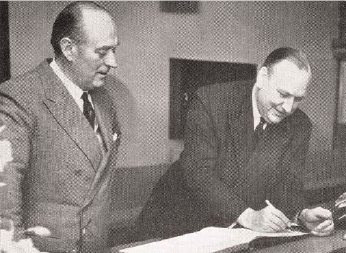 |
|
|